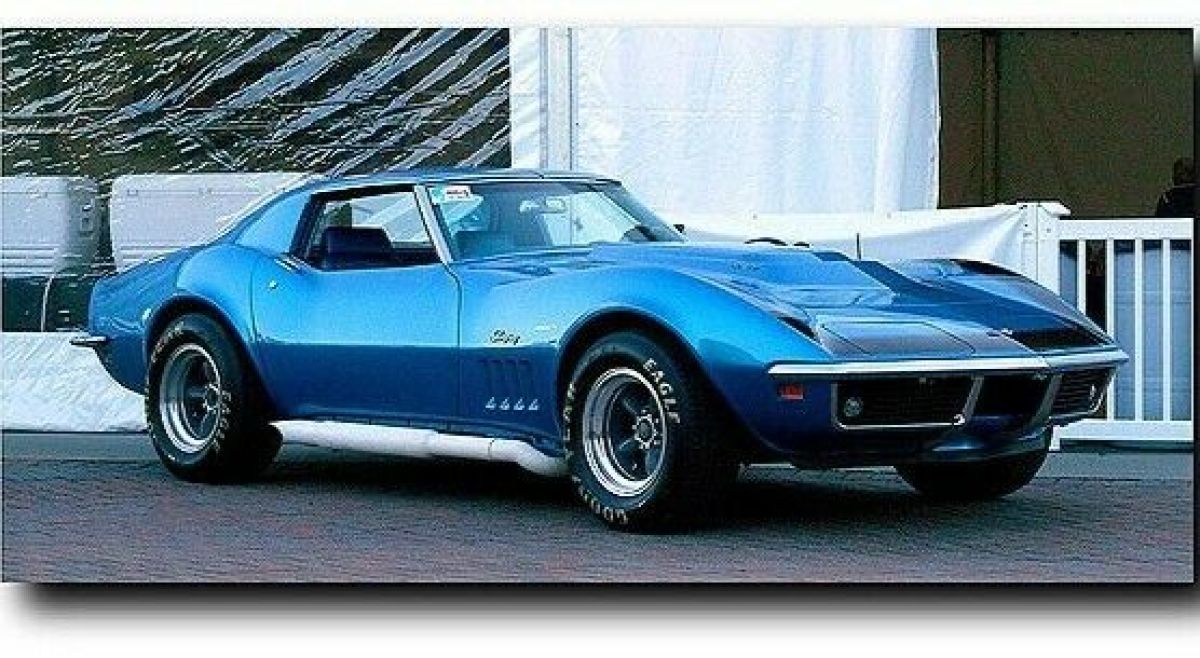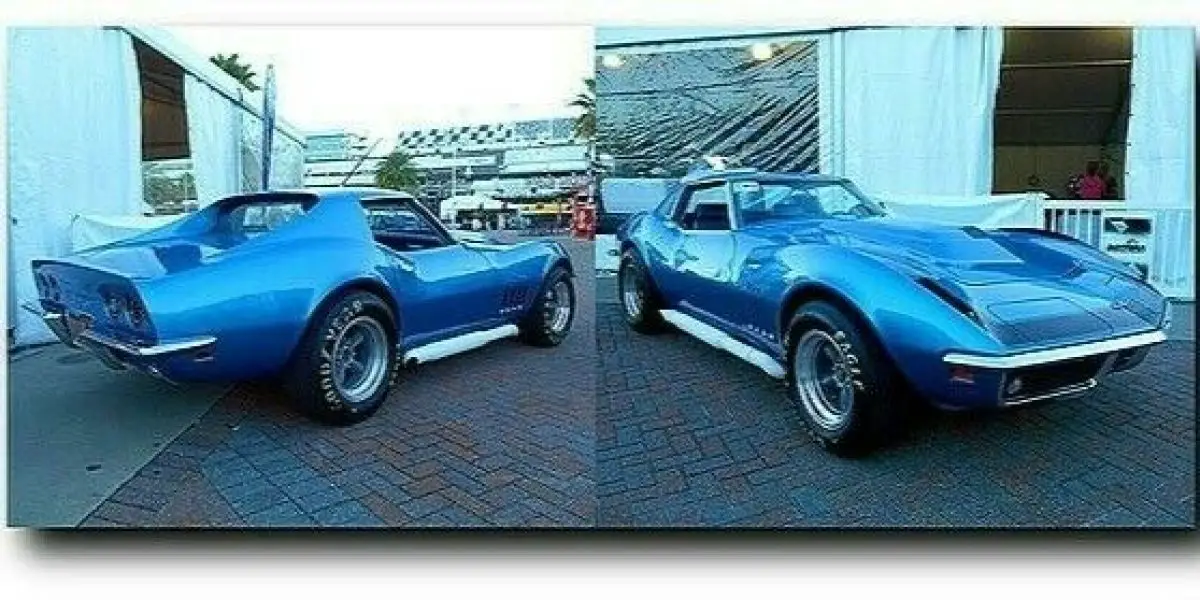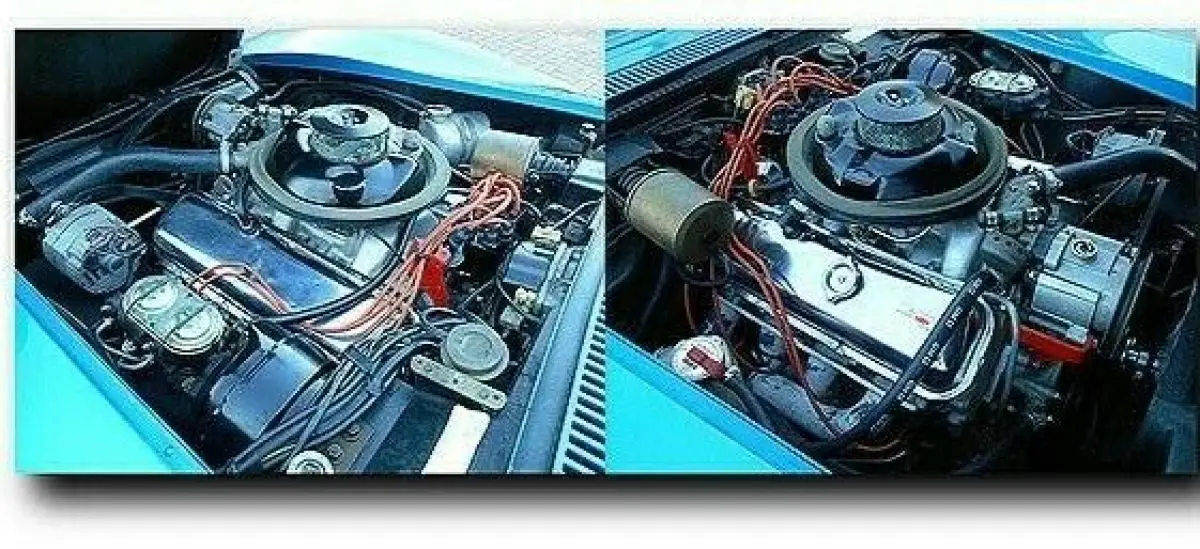1969 Corvette ZL1 Authentic Recreation FrameOff Restoration Period Correct Parts
Price: US $275,000.00
Item location: Fort Lauderdale, Florida, United States
Description:
1969 Chevrolet Corvette Coupe ZL1
You Are "NOT" Dealing With A "DEALER" That Saves You The Hassle And Extra Dealer Fee's Like Dealer Doc's Fee's, Advertising Fee's, Etc... And ALL The Dealer's Gimmick's ! Private Sale.I've Describe The Car To The Best Of My Knowledge ! "Buyer Is Responsible For Inspecting & Confirming ALL Conditions & Information Before Purchasing" SOLD AS-IS ! "No Express Guaranties Or Warranties" I Have The Authority To Stop The Auction At Anytime ! Check My 100% Feedback With Over 1,475 Transactions & A Proud Member Of eBay For Over 15 Years !Additional Photo's & Video:http://classicandmusclecar.com/details.php?v_id=88CarGuyCronicles.comFeatured TributeRead A Slick Article
Written By Martyn L.
“The Fabulous ‘69 ZL 1â€Inspected & Signed By Retired GM Engineer Gib Hufstader
’69 CORVETTE ZL1: TRIBUTE WITH PERSONAL TOUCHES!
Posted on Car Guy Chronicles on March 24, 2018 by Martyn L.
Historical ZL1 background info plus George Haddad’s stunning alloy-engineCorvette Recreation.To understand the importance and uniqueness of George Haddad’s ‘69 Corvette ZL1 Recreation,Top, you have to go back to late-1968.Hot Rodmagazine broke the ZL1 Corvette story in the December 1968 issue with an unforgettable all-aluminum big-block 427 engine wearing bright yellow headers, above, on its cover. Haddad built this ZL1 Tribute at his shop,http://www.fabulousrestorations.com.
Exact production numbers for ’69 ZL1 Corvettes and the number of real ZL1s that have survived have always been questionable. Chevrolet came up with two production models decades ago, but more than two real ones have surfaced over the years. Actual production could have been up to seven that might have included L88 models retrofitted at the factory with all-aluminum ZL1 motors before being shipped to either dealers or Chevrolet engineering. The jury is still out on a verified count.
1969 Corvette Coupe ZL1 RecreationAll Original Survivor (Interior Also)
18,500 miles
Repainted in acrylic lacquer
No Hit Body DamageCHASSISALL APPROPRIATE, PERIOD CORRECT COMPONENTS & PARTS
|
|
George Haddad’s Stunning 1969 ZL-1 427 Corvettefrom The Corvette Report Dateline: 7.6.17 first published in the January 2016 issue of Vette Vues MagazineTo understand the importance and uniqueness of George Haddad’s 1969 ZL-1 Corvette, we have to get into the “Vette Vues Time Machine†and go back to late 1968.The December 1968 issue of Hot Rod Magazine hit the newsstands like a thunder clap, with an obviously all-aluminum big-block 427 Corvette engine wearing bright yellow tube headers. It looked like Chevrolet finally had an ace trump card. The 427 ZL-1 was the ultimate “pie-in-the-sky†Corvette setup – big-block horsepower and torque – with the weight of an iron small-block! Duntov was a happy man because his dream of an all-aluminum engine for the Corvette went all the way back to the 1957 Q-Corvette concept that not only called for a fuel-injected all-aluminum small-block engine, but a trans-axle! (Sounds like a C5, doesn’t it?)Duntov and his team tried casting SBC engines in aluminum, but there was a serious “strength of materials†issue that was never successfully worked out.The SBC was simply not strong enough when made in aluminum. A small batch of all-aluminum 377 engines were developed for the Grand Sport project that were powerful and light, but just wouldn’t hold together in competition. The prospect of an engine lighter than a regular SBC was deliciously tantalizing. So when the replacement for the 348/409/427 W-series (truck) engine, (the Mark IV) was being designed, an aluminum version was an obvious next step because the Mark IV was inherently a more stout structure.The story of the production ZL-1 Corvettes is a long and complex one that we won’t try unraveling here, except to say that a batch of seven cars were built in early September 1969.The cars that “rolled off the St. Louis assembly line†were full-out RPO-L88 cars. The RPO-ZL-1 aluminum block was an option that was only available on an L88 engine. In other words, the ZL-1 was identical to the L88, except it had an aluminum block – making it 100-pounds lighter than the L88 Corvette, something that only racers would even notice. The weight reduction in the front also helped the front-to-rear balance. The blueprinted ZL-1 engines were assembled at the Chevrolet Tonawanda Engine Plant, outside Buffalo, New York and shipped to St. Louis where line workers swapped out the L88 engines for the ZL-1 engines.According to a Corvette Expert the story goes that a batch of seven engines were installed into L88 optioned Corvettes and surprise, surprise, when driven on the street, they overheated just like any other L88 because they came with a ’65 big-block aluminum radiator with no radiator shroud. This setup was fine for racing but terrible for street use. A production Stop Order was issued and five of the seven cars were put in quarantine and two cars were sent to Chevrolet Engineering analysis. So, according to the “official records†as seen in the “Corvette Black Book,†there were only two official 1969 ZL-1 Corvettes. The five quarantined ZL-1s were eventually shipped to Chevrolet Engineering, Attn: Zora Arkus-Duntov. Rumor has it that they slipped out the back door, never to be officially accounted for. The Tonawanda Engine Plant built ZL-1 engines for a short time with those engines sold through the GM Parts/Dealer Network. 1969 ZL-1 Corvettes are like ghosts – not hard to fake, but very hard to prove their existence. So, that’s the short version of why ZL-1 427 Corvettes are so revered. Big-block grunt, small-block weight – what’s there not to like?George Haddad grew up in Grosse Point, Michigan, not far from Detroit in the 1960s.This was the time of Woodward Avenue, cruising, and occasional street racing. On the street scene, Mopars were the dominant force, so young George was a Mopar guy. But George had a car pal that owned Corvette and it didn’t take long for him to get the Corvette bug. He bought a used 1968 327/350 with a four-speed while working at Chrysler and never looked back on Mopars. By the late ‘60s when George entered the work force, he got a job with Chrysler, started out “on the line†and quickly worked his way into management. A nasty recession hit the nation and George got caught up in a wave of layoffs. Wanting to escape the harsh Michigan winters, George moved to warm, sunny Fort Lauderdale, Florida.
After settling into the Sunshine State, George attended Miami-Dade College and soon got a job at a local gas station, owned by a drag racer with a Pro Stock Vega.Here’s where George learned paint and fiberglass bodywork and started doing custom glass-work. It wasn’t long before George opened his own custom fiberglass shop, Fabulous Restorations. The best way to promote custom bodywork is to have a company car as a showpiece. George bought a 1974 Corvette and built his first, all-out custom Corvette and promptly entered the car into the World of Wheels Show and won 2nd place. He continued to show his latest work in the World of Wheels Show for the next 10 years. This put George and his shop on the map, and for the next 20 years he exclusively did Corvette work and eventually got into muscle car projects.
In 2013 one of Haddad’s customers asked him to build a recreation of 1969 COPO Camaro ZL-1 “Hugger Orange†#28.In 2008 GM Performance Parts released their “ZL1 Anniversary Edition 427†crate engines, so to sweeten the build of the Camaro, George was able to get ZL1 Anniversary Edition engine #28. George confessed, “When I started the project, I knew almost nothing about ZL-1s, but after the car was completed, it was so cool that I got the ZL-1 bug!â€Then George persuaded a good friend to let him to build a 1969 ZL-1 Corvette.Since the factory-built ZL-1s (converted L88s) are unbelievably expensive, George came up with an ingenious plan. He located a Riverside Gold ’69 427/390 Corvette survivor car that was built within two days (September 16, 1969) of the ’69 L88/ZL-1 Corvettes and replicated the GM build process. He also found one of the factory-built ZL-1 engines from the same time. The car was disassembled and rebuilt with original factory L88 suspension, brakes, and factory deletes, using period-correct factory fasteners, build techniques, and paint. Although the completed ZL-1 was not one of the original batch of seven, the car, engine, and date-coded components are all from the correct time period. The car looked as if it had rolled off the line – skinny Firestone Wide Oval tires, side pipes and all. George Haddad did what Chevrolet would have done if they had built more ZL-1s in September 1969.
George took the Riverside Gold ZL-1 to the 2014 and 2015 NCRS Orlando and the Amelia Island events and received rave reviews.So much so that another friend asked him to build him a Le Mans Blue ZL-1. His friend found a survivor 427/390 ’69 Coupe that was built in the same time period as the original batch of ZL-1s and George found another period correct ZL-1 engine. Unfortunately his friend’s wife suffered some health challenges, so George bought the car and took it on as a personal project. Now sticky thing about this is that ZL-1 Corvettes look exactly like an L88 from the outside. So if George built the car as the factory would have, it would have looked like “just another L88†– which isn’t so bad, but this is a ZL-1! Since the L88/ZL-1 was first and foremost, a starting place for building an A/Production race car, George decided to take some liberties to make the car more interesting.The most obvious deviations from stock are the Torque Thrust mag wheels withover-sizedtires and the unique white side pipes.Most of us are used to seeing C2 and C3 racing Corvettes with Hooker header-style side exhausts with the distinctive four primary tubes that merge into a collector and then a long collector that runs along the side rockers. The Kustom Headers Company used to build special header-side-exhaust systems for Chevrolet. If you look at photos of many of the ’67 to ’69 racing Corvettes, rather than the four tubes that snake out then join into a collector, there’s one long, large diameter collector tube. This is how the factory first started outfitting racing Corvettes. George used Stahl Headers and replicate the Kustom Headers design but with a slight variation.Note the “swell†on the side-pipes that’s in the middle of the doors.The primary header tubes that come off the engine are 2-inchs in diameter. The primaries merge into a 3-inch collector that bends and wraps up onto the rockers. Midway back (centers under the doors), the collector enlarges to 4-inches in diameter, and the final exit tube measures 3-1/2-inches. The long, large diameter collectors (Hooker-style) are excellent for upper rpm power, but tend to diminish mid-range power. The “swell†boosts the mid-range power without affecting the high rpm power range.The wheels are period-correct 15×8 Torque Thrust racing mags shod withover-sizedGoodyear Billboard 26.5×15 tires with 7.9-inches of tread.To get the wide tires to fit in the rear fender wells without hitting the leaf spring and locating bolts, George clipped the ends of the spring 1-1/2-inches on each side, then drilled new holes on the ends of the springs, effectively tucking in the locating bolts, giving the wider rear tires clearance.
Haddad intended his ZL-1 to bestreet-able, so one of the inherent problems needed to be fixed. ZL-1s and L88scame with a ’65 big-block aluminum radiator with no radiator shroud, which was adequate for high-speed racing, as a shroud is only needed for street use. To keep the big ZL-1 in the correct water temp range all that was needed was a production radiator shroud from a standard 427 engine. We mentioned that all of the hardware, mounts, fasteners, etc are period correct. Even the L88 hood is vintage 1969 and not a replica.
“Quality control†was a genuine concern with Corvettes in the late ‘60s, so when the body was being prepped for repainting with acrylic lacquer, George didn’t make it “too perfect.†He even left in a few of the factory mistakes and kept the original stenciled numbers on the chassis. The interior is totally stock, with no radio and console sticker that says in red lettering, “WARNING: VEHICLE MUST OPERATE ON A FUEL HAVING A MINIMUM OF 103 RESEARCH OCTANE AND 95 MOTOR OCTANE OR ENGINE DAMAGE MAY RESULTâ€. The finishing touch is the black nose stripe that wraps up along the inside of the front fender creases.Between the Le Mans Blue paint, the L88 hood, white header side pipes, and racing mag wheels, George Haddad’s 1969 ZL-1 Corvette is a strikingly handsome car.But the piece de resistance is when he fires up the ZL-1. The bone-stock ZL-1 sounds totally wicked and intimidating. George says, “I don’t ever, ever intend selling this car. There’s a glass wall in my shop office and I park the ZL-1 on the other side so that I can look at it every day.â€
From 1967 to 1969 Chevrolet only officially built and sold 216 L88 Corvettes.That’s a pretty small club. The L88/ZL-1 cars are sometimes referred to as Duntov’s “racer kits.†Fresh off the assembly line they were just the starting point for building an A/Production Corvette. Zora liked taking care of his racers. But it turned out that George had a Duntov connection that he wasn’t aware of.
Back in Grosse Pointe, Michigan when George was hanging with his Corvette pals, washing and doing things to their Vettes, one day an elderly man driving a white Corvette stopped by and started talking cars. George recalls,“I could hardly understand what he was saying, but he seemed to know what he was talking about. His white Corvette had mag wheels, side pipes, and L88 hood, and big fender flares. But honestly, we had no idea who the man was.â€Years later in 1995, George was at a Corvette show and Zora and Elfi Duntov were there, and Zora was signing autographs.George explained,“Zora asked me where I was from and I told him Grosse Pointe, Michigan. He looked surprised and told me that he too lived in Grosse Pointe and after exchanging a few street names; I realized that he was the old guy that stopped to talk with us a few times! Zora told me that the next time I go back home, stop by after 5pm and we’ll have drinks. Imagine that! The following spring Zora passed before I was able to get home. But at least I got to see him again and discover that he was the old guy in the white Vette.â€
| ClassicAndMuscleCar.comHas A Variety Of Generations Of Classic Cars &Muscle CarsFor Sale. At Any Given Time, We Have A Selection Of Classic Cars, Corvettes & Muscle Cars! I Am An Enthusiast With ALove &Passion For Classic Cars Of All Makes & Models. IWant To Make Your Next Classic Car Experience Be The Best Possible. ITake Extra Care In Ensuring That OurCustomers Are Confident &Comfortable In Their Purchase. IHave Owned Classics Cars Since The 1960's. Over 50 Years Of Knowledge In The Buying, Repairing, Restoring & Selling Classic Cars. What We Offer In All Fairness, Is Our Assistance In Helping You Find & Purchase The Car Of Your Dreams! |
| Thank You, Owner |
Vehicle Details:
- Condition: Used
- Make: Chevrolet
- Model: Corvette
- SubModel: 427 ZL1 Restored
- Type: Coupe
- Trim: Coupe ZL1
- Year: 1969
- Mileage: 18500
- Color: Lemans Blue
- Engine size: 427 ZL1
- Number of cylinders: 8
- Power options: Power Brakes
- Fuel: Gasoline
- Transmission: 4-Speed M-22 Rock-Crusher
- Drive type: RWD
- Interior color: Blue
- Drive side: Left-hand drive
- Safety options: Shoulder Harness
- Options: PERIOD CORRECT COMPONENTS & PARTS
- Vehicle Title: Clean Want to buy? Contact seller!




